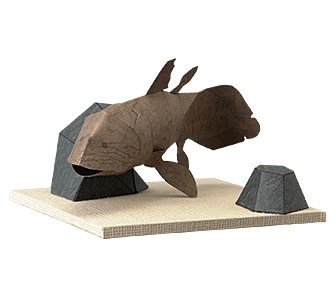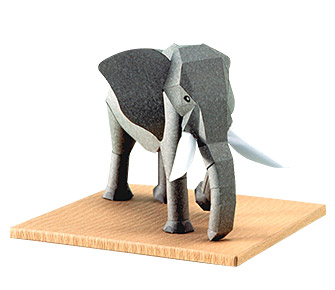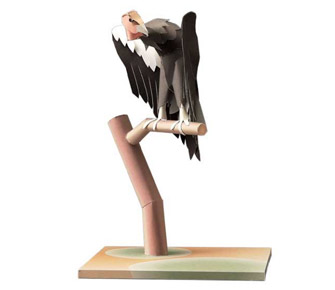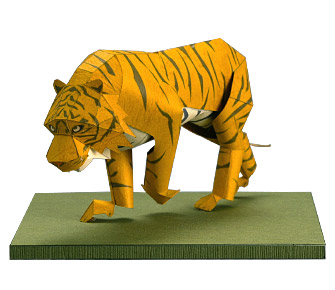Tiger
Papercraft kit : The tiger, characterized by its fearless appearance and unique stripe pattern.
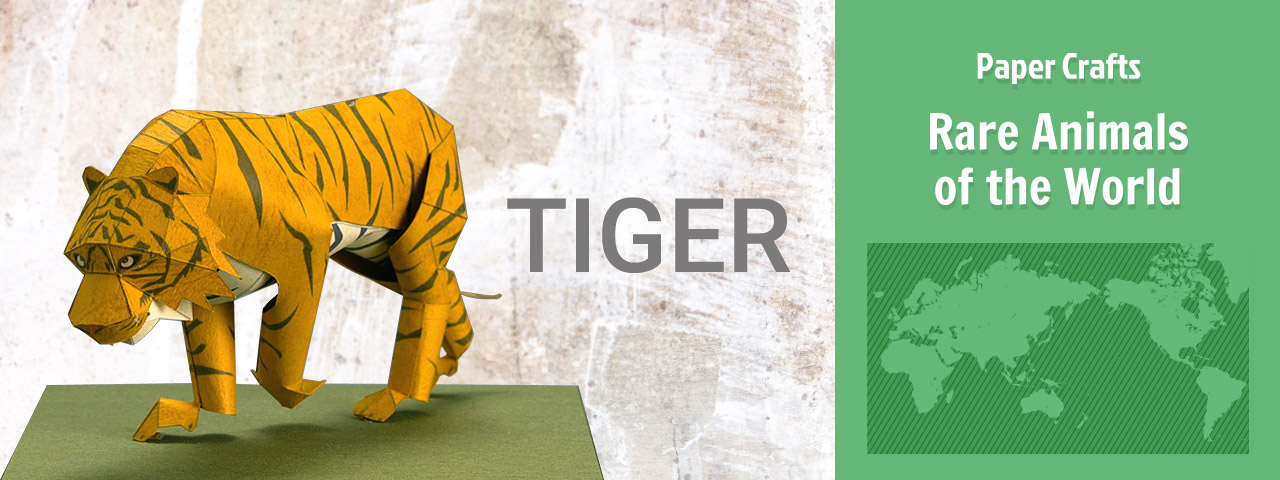
The tiger, characterized by its outstanding stripepattern, is the largest carnivore of the cat family. The species currently suffers danger of extinction due to poaching as an ingredient for Chinese medicine. The species is classified as “Endangered [EN]” in the Red List.
Assembly instructions for the Paper Craft Model of the majestic tiger, as well as a photo image of a completed model, may be downloaded from this website.
Download - Parts sheet & InstructionsThis data was released in December, 2000.
Tiger - Animal Guide

- Tiger - Felidae
- Panthera tigris
- Height: 170 to 250 cm (approximately 5.6 to 8.2 ft.) in length / Weight: 150 to 270 kg (approximately 330 to 595 lbs.)
- 2016 Edition of the RED LIST categories : Endangered [EN]
The tiger is the largest existing carnivore of the cat family, some of the species reaching a weight of 250kg (approximately 551 lb.) or more. Its remarkable stripepattern plays the role of camouflage, allowing the species to blend in with its surrounding environments, such as forests and thickets, without being noticed by its prey.
The tiger hunts mainly between evening and sunrise. It lies carefully in ambush waiting for prey to approach. When catching its prey, the tiger overpowers it with its large paws and long claws, making the kill with a bite to its vitals. Depending on the habitat, its diet is varied, ranging from large-sized herbivorous animals, such as deer and wild boars, to birds and fish. Surprisingly, even an experienced tiger succeeds in catching prey only once every ten to twenty attempts. The creature usually hunts animals once a week and spends several days consuming the kill.
Unlike the lion, the tiger is a solitary animal, forming no groups. Each male is on his own in his territory where several females’ territories are included. The tigress lets her cubs stay closely with her all the time until they come to maturity. The litter numbers two to six cubs after an approximately 100-day gestation period. The male does not participate in raising the cubs at all, the job being left solely to the female.
Habitat
The tiger inhabits various areas, such as tropical rain forests, deciduous forests, coniferous forests, mangrove forests and swamps. The species living in the tropical and subtropical zones often spends hours in the water in order to gain relief from the heat.
There are currently five subspecies of the tiger (5,000 to 7,200 individuals in total) inhabiting the world. The Bengal tiger of India and Bangladesh occupies two thirds of the entire tiger population. The others constitute the Siberian tiger in Russia, Sumatran tiger in Indonesia, South China tiger in China, and the Indochinese tiger, which ranges from Myanmar to Vietnam and the Malay Peninsula. Though widely scattered throughout Asia, all subspecies of the tiger have been decreasing in number and suffer the danger of extinction. The cause of decline has been attributed to the general decrease of prey due to deforestation, and to the hunting of the tiger for sport or for its beautiful fur coat. Moreover, tiger poaching is still practiced today due to the fact that some countries highly value the species’ whiskers and bones as important ingredients of medicines.
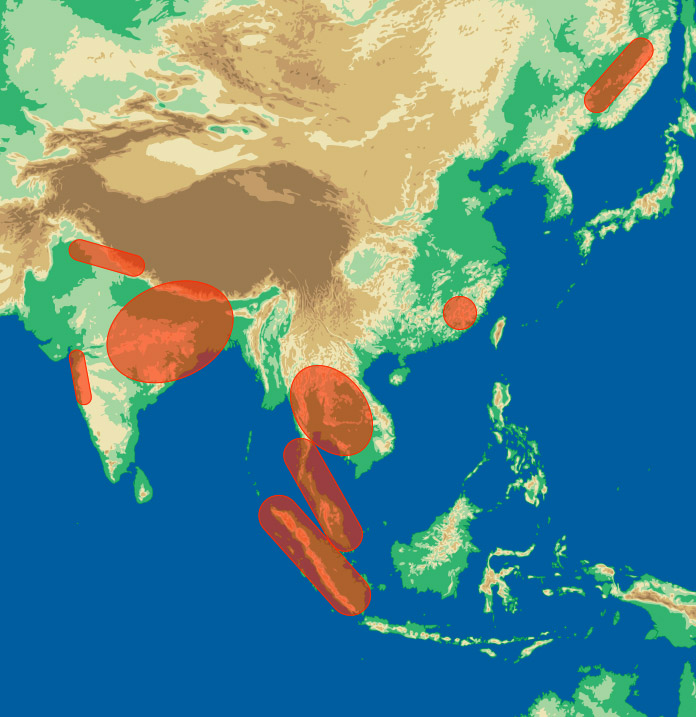
About Red List
The Red List is the material prepared by IUCN (International Union for Conservation of Nature) classifying various threatened wild animals of the world and reporting their present habitat status.
The List evaluates the extinction risk level of each individual species from a biological viewpoint, but it possesses no legal power to enforce regulations concerning threatened species. The Red List is broadly employed as fundamental information in advancing the preservation of threatened wild animals.
Referring to the original Red List, the Environment Agency of Japan has compiled the Japanese edition of the List listing threatened taxa inhabiting Japan.
| Extinct | EX | No known individuals remaining. |
|---|---|---|
| Extinct in the Wild | EW | Known only to survive in captivity, or as a naturalized population outside its historic range. |
| Critically Endangered | CR | Extremely high risk of extinction in the wild. |
| Endangered | EN | High risk of extinction in the wild. |
| Vulnerable | VU | High risk of endangerment in the wild. |
| Near Threatened | NT | Likely to become endangered in the near future. |
| Least Concern | LC | Lowest risk. Does not qualify for a more at-risk category. Widespread and abundant taxa are included in this category. |
| Data Deficient | DD | Not enough data to make an assessment of its risk of extinction. |




